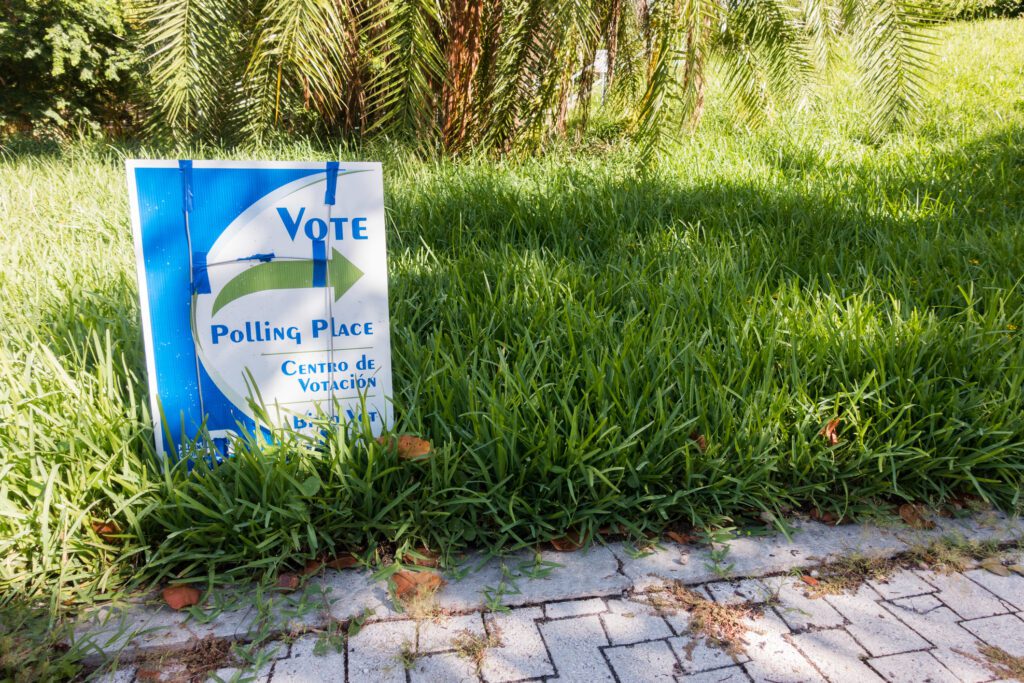Democratic Consultants Worry Investment May Not Match Growth of Hispanic Voters
For Democrats to be successful, the party must look beyond mobilization and focus on Hispanic voter persuasion.

Hispanic Americans now account for one in four of new registered voters, according to a recent Univision/L2 analysis. That figure and other data points are the latest justification for a review of Democratic outreach strategy with it comes to Hispanic voters, Democratic consultants told C&E.
The analysis shows an increase in Republican Hispanic voter registration over Democrats (23 to 22 percent) last cycle. Moreover, Hispanic Republicans were more likely to cast their ballot than Democrats, with turnout of 80 versus 70 percent.
Those figures point to the need for looking at Hispanic voters as a persuadable group, not just a mobilization target, according to Danielle Cendejas, a Los Angeles-based SVP at The Strategy Group.
She recalled campaign strategy discussions in the past that went: “This is a Latino district, we need to do Spanish TV.” She added: “More likely than not, they’re [the district’s Hispanic voters] English speaking — second or forth generation and consuming their media on something totally different.
“We shouldn’t really be talking about Latino audiences anymore. We should be talking about Mexicans in Texas versus Mexicans in California in the same way we don’t treat all Asians voters the same way,” said Cendejas. “Just because there’s a similar language doesn’t mean we’re dealing with the same electorate. As a party, we need to start recognizing the diversity within the Latino community.”
Still, recognizing that diversity will likely come at a higher cost for data and research. For instance, country of origin and language preference data isn’t typically included in the vote file. And to put Cendejas’ recommendation into practice, she suggested a separate poll track to gather the opinions of Hispanic voters.
Once the campaign has that data, it can develop, say, mail pieces aimed at foreign-born versus U.S.-born Hispanic voters. That could increase a campaign’s mail costs by some 25 percent, or more. “You’re not getting the savings from the efficiencies on the bigger universe,” Cendejas explained.
But even if a campaign only wants to do turnout with its Hispanic voter universe, there could be higher costs associated with that strategy in 2021-22 because of potential changes to voting laws. To wit, Univision’s analysis found that 74 percent of Hispanic voters cast their ballots early or by mail compared with 62 percent of non-Hispanic voters last cycle.
“You do have to do persuasion, but the education campaign is critical when reaching out to Latino voters,” Xochitl Hinojosa, a managing director at Bully Pulpit Interactive, recently told C&E. “They want to vote. You have to make sure they have the correct information — especially with voter suppression and laws constantly changing in states.”
With all of the voting rule changes introduced as a result of the pandemic, 2020 was a good test case for some of these efforts, Hinojosa added.
“Given that things were constantly changing in states, whether it be vote by mail or when you could turn you ballot in by, it caused a lot of obstacles for the Democratic Party so we did an aggressive paid media campaign in both English and Spanish. We invested more last year than we had in a long time.”
But that investment will now have to weighed against reaching a growing voter demographic. Univision reported that Hispanics now account for 12 percent (23.6 Million) of all registered voters, and Hispanic voter registration increased some 24 percent in 2020 over 2016 — compared with 9 percent for non-Hispanic voters.
